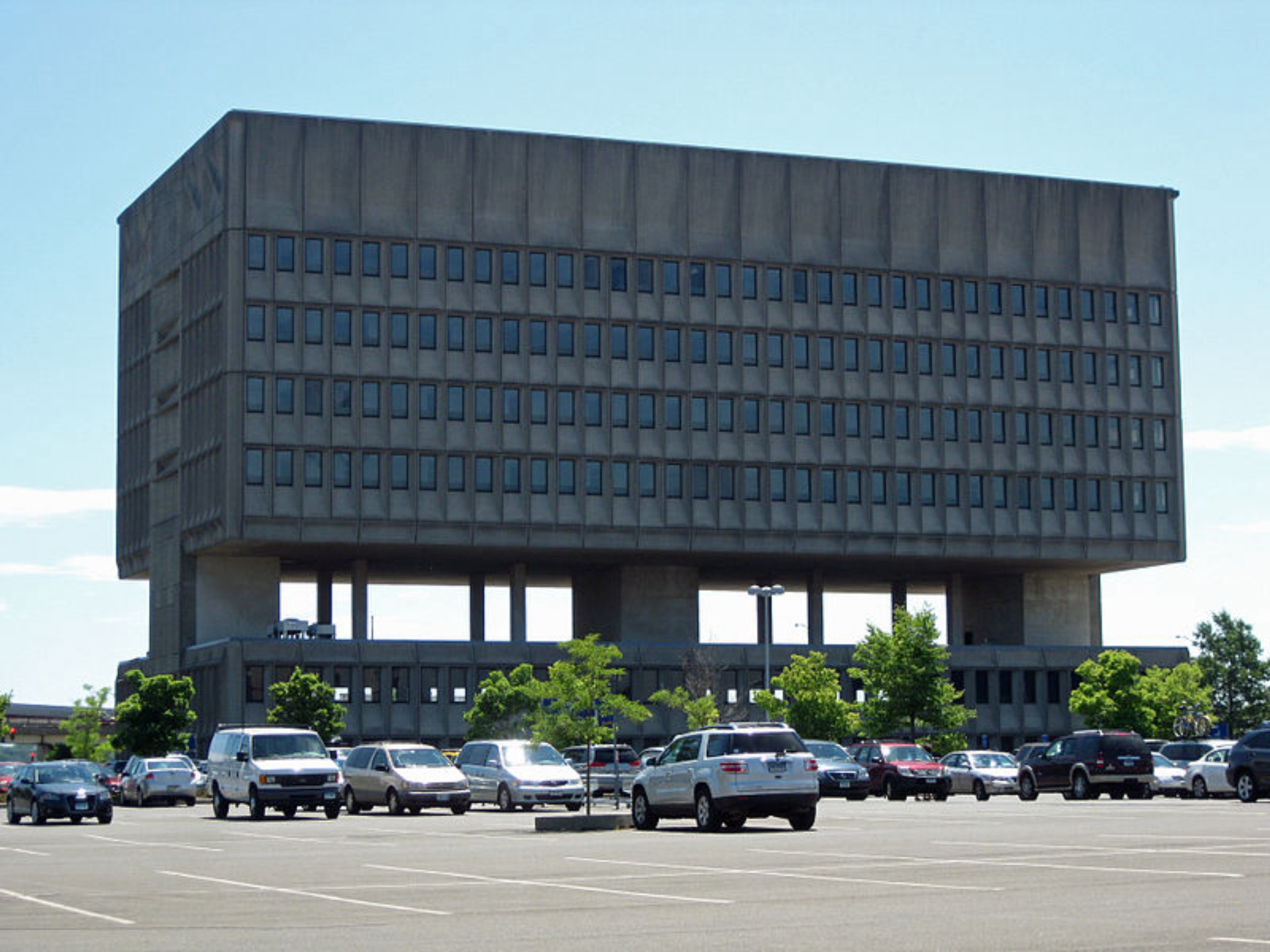Description
Brutalist buildings have a look of weight and massiveness that immediately sets them apart from those of other predominantly rectangular, flat-roofed styles. Windows are treated as holes in the walls or as voids in the solids of the walls, and not (as in the International Style) as continuations of the "skin" of the building. Indeed, Brutalist buildings have no skin; this might be described as a "flesh-and-bones architecture." Concrete is the favorite material; it is always left exposed (as are brick and other materials- so far as fire regulations allow) and often rough-surfaced, showing the marks of the wooden formwork; sometimes it is textured by hammer or other means. Structure, most often concrete frame, is also frankly exhibited- as, inside the building, the plumbing and other services may be too. Broad, qui et wall surfaces are interrupted by deep-shadowed penetrations of the building mass; vertical slots may contrast with broad oblong openings or tall openings with horizontal slots, while " egg-crate" effects are also much employed.
Whiffen, Marcus. American architecture since 1780: a guide to the styles. N.p.: The MIT Press, 1969. Print.
